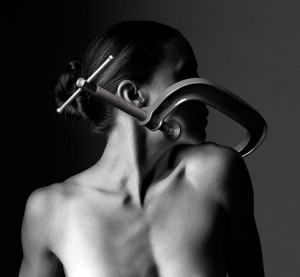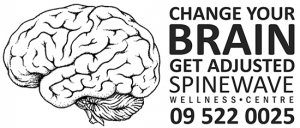 I think my case is unique insofar that my condition is almost cured against all odds of Western medicine – KA
I think my case is unique insofar that my condition is almost cured against all odds of Western medicine – KA
Dystonia disrupts the nervous system’s ability to allow the brain and muscles to communicate. How the body controls muscle movement is very complicated and involves many areas of the brain.
The areas of the brain believed to be most affected by dystonia are called the basal ganglia.
The basal ganglia check the speed of movement and control unwanted movements. They are responsible for sending signals to muscles, instructing them when to move, and when to stop moving. For reasons not yet fully understand, in dystonia, the basal ganglia’s instructions to muscles become irregular and chaotic, resulting in unwanted muscle movements and contractions (see video example) ?
I was diagnosed with cervical dystonia (also known as spasmodic torticollis) in 2007, which is a neurological disorder without any known cure.
I was experiencing spasm and pain in my neck and shoulders, and also noticed my posture was getting really crooked. It was mainly on the right side. My neck was pulling to the right with the shoulder lifting up. The problem with dystonia (“dys” meaning disorder and “tonia” meaning muscle tone) is muscles that normally work in synergy start opposing each other. For example, normally when turning your head to one side, the muscles on that side contract while those on the other relax – but in dystonia they fight against each other, tensing the muscle. As a result of overuse they grow larger and cause tension, exhaustion and pain. Even worse: twitches or tremors start. Imagine trying to hold your arm in the air for a long time. Even without any added weight, you start trembling. This was the situation I was in.
Fifteen minutes after getting out of bed the muscles in my neck would start twitching and I wouldn’t be able to hold my head straight. The shakes started ruining my social and professional life. It’s a horrible thing not being able to control your voluntary muscles. I am in my mid-forties, trained in medicine, and work as a university researcher, which is quite a challenging job. I have to spend a lot of time with a computer (did I mention I couldn’t keep my head still?), give lectures and seminars all the time; not forgetting interacting with many people during any day.
The current mainstay treatment is Botox injections of affected muscles. I had these injections every 3 months until 2014. The reason I stopped is it made the muscles very weak and over time I found myself being a victim of a 15-minute procedure that affected a quarter of my life – depending whether the doctor was lucky enough to inject the correct dose into the correct muscles in my neck.
The neck is an amazingly complex structure. There are many small and big muscles involved and when one group of muscles is temporarily paralysed by the botulinum toxin (Botox), other muscles take their turn to go into spasm and twitch. At the end of 2014 I came to the point where I considered leaving my job. Being a doctor and a researcher, I decided to find a way to fix myself.
I was persistent and patient, trying many different things. The most promising approach was to get active. Instead of paralysing those muscles, I began to actively, consciously, move them and regained hope. There is an online community and a physical programme that I started following, involving 90 minutes of exercise and stretches every morning! Plus 3 days per week of gym exercises – each 2 hours long. I’ve been faithfully doing this for more than 2 years now and it has made a difference. The exercise and movement improved my voluntary control and posture; however, the tremors didn’t go away.
There is strong evidence for dento-cranial and postural therapy. I started creating dental splints and felt there was definitely a connection. Shortly after, I found out about upper cervical and contacted Neil. He was very prompt and helpful and after brief phone correspondence I decided to give it a go. Being a doctor and scientist I was cynical toward non-medical treatment, but Neil assured me completely with his knowledge, skills and his approach made a lot of sense to me.
The reason I am writing this story is because upper cervical chiropractic care created the biggest breakthrough for me. My tremors are almost gone for good and I was 80% fixed within a very short period of time. It was amazing. No neurological or medical specialist ever requested X rays before and it was evident the dystonia had created scoliosis of the spine.
I think my case is unique insofar that my condition is almost cured against all odds of Western medicine. I’m still continuing my daily stretches and gym exercises as I feel they are also essential in keeping me healthy and in a good mood, though I strongly suggest being open-minded about non-medical treatments and never lose hope! I genuinely think many dystonic patients out there could be helped by upper cervical chiropractic care.
KA
© Spinewave 2016

